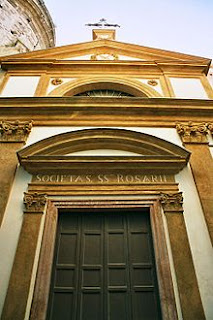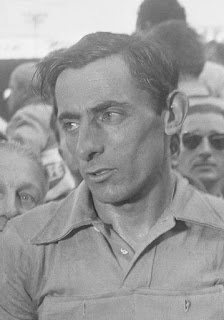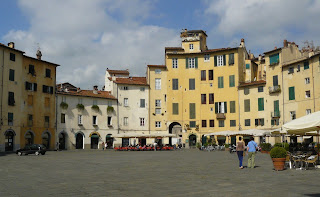Popular star who found fame as Violetta
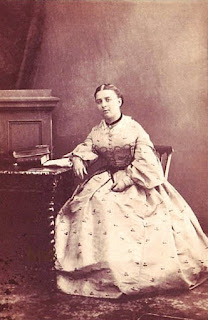 |
| Marietta Piccolomini had to persuade reluctant parents to let her sing |
Her career was relatively brief, spanning just 11 years. Yet
she managed to achieve unprecedented popularity, to the extent that crowds of
fans would gather outside her hotel and men would volunteer to take the place
of horses in pulling her carriage through the streets.
Some critics said that the adulation she enjoyed was more to
do with her youthful good looks and her acting ability than her voice, who they
argued was weak and limited.
Nonetheless, she was seldom short of work and she was the
first Violetta to be seen by operagoers in both Paris and London. She had a particularly enthusiastic following
in England, where she undertook several tours of provincial theatres as well as
appearing in the capital.
Born Maria Teresa Violante Piccolomini Clementini, she came
from a noble Tuscan family. Her musical mother, a talented amateur, would sing duets
with her. However, while her family were happy to arrange lessons for her with
Pietro Romani, one of Italy’s first professional singing teachers, her father was
reluctant to allow her to make opera singing a career.
She made her first stage appearances in 1852, at the Teatro della
Pergola in Florence in Gaetano Donizetti’s Lucrezia Borgia, and at the Teatro Apollo in
Rome, where she performed in two more Donizetti operas, Poliuto and Don Pasquale.
 |
| Giuseppe Verdi tried to stop Piccolomini's Paris debut |
In 1856, she was invited to reprise the role in the British
premiere of La Traviata at Her Majesty’s Theatre in London, where she became a
favourite. She enjoyed popularity in
Dublin also.
The following year she was Violetta in the first French
production of La Traviata, which was staged at the Theatre des Italiens in
Paris despite attempts by Verdi, who did not have copyrights in France, to stop
it going ahead.
Returning to England in 1858, she sang in Donizetti’s La figlia
del reggimento and Lucia di Lammermoor, and in Don Giovanni and Le Nozze di Figaro
by Mozart, before embarking on a long provincial tour. Later in the year, she performed
in Holland and Germany.
After another season and another tour of English cities in
1859, in the autumn she made her New York debut at the Academy of Music, as
Violetta in La Traviata, after which she took her repertoire of Verdi, Donizetti
and Mozart roles on a successful tour of cities across America.
Her marriage in 1860 to the Marquis Francesco Caetani della
Fargna effectively ended her career, although she was persuaded out of retirement
in 1863 for some benefit concerts in honour of Benjamin Lumley, the former
impresario of Her Majesty’s Theatre and the man who had launched her career as
an international artist, who had fallen on hard times.
Piccolomini died in 1899 at her villa in Florence, having
contracted pneumonia. She was buried at
the Cimitero della Porte Sante at the Basilica di San Miniato al Monte.
Adjoining Siena’s beautiful Italian Gothic and Romanesque
cathedral, dedicated to the Assumption of Mary, is the Piccolomini Library,
which houses precious illuminated choir books and is decorated with frescoes by
Bernardino di Betto, who was better known as Pinturicchio, which were
favourites of Cardinal Enea Silvio Piccolomini, who would become Pope Pius II.
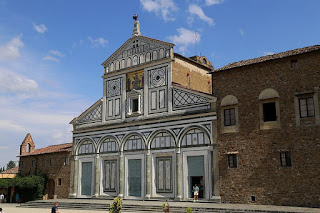 |
| The Basilica di San Miniato at Monte is a Romanesque church standing at one of the highest points in Florence |
The Basilica di San Miniato al Monte, a handsome Romanesque
church, stands at one of the highest points in Florence, commanding sweeping views
across the city. The cemetery was established there in 1848 within the basilica’s
16th century fortifications.
Among those interred there are the painters Giuseppe Abbati and Pietro
Annigoni, the author Carlo Collodi (of Pinocchio fame), the actor Tommaso
Salvini and the historian and politician Pasquale Villari.
More reading:
La Traviata's premiere in Venice
Verdi: How Italy mourned the loss of a national symbol
Rigoletto debuts at La Fenice
Also on this day:
1696: The birth of painter Giovanni Battista Tiepolo
1827: The death of scientist Alessandro Volta
1922: The birth of writer and movie director Pier Paolo Pasolini
(Picture credits: Siena cathedral by Myrabella; Basilica di San Miniato by Rufus46)











